| View previous topic :: View next topic |
| Author |
Message |
Pierre Joubert
Joined: 09 Mar 2012
Posts: 1605
Location: Western Cape



|
 Posted: Jul 20, 2016 14:22 Post subject: Re: Cleaning Pyrite Posted: Jul 20, 2016 14:22 Post subject: Re: Cleaning Pyrite |
|
|
| Ivan Blanco (PDM) wrote: | Sorry Pierre, I just have seen your message. The coating around the pyrite cubes of Navajún (and some others from La Rioja) is cookeite. They have been studied and the results published.
Most of these coatings can be removed with your finger nail or a brush. The use of a water jet gun make the work very easy. If the cubes are on matrix, do not use water, just a soft brush. |
Hi Ivan. Thank you very much for the information, regards.
_________________
Pierre Joubert
'The tree of silence bears the fruit of peace. ' |
|
| Back to top |
|
 |
James Catmur
Site Admin

Joined: 14 Sep 2006
Posts: 1470
Location: Cambridge



|
 Posted: Jul 20, 2016 15:28 Post subject: Re: Cleaning Pyrite Posted: Jul 20, 2016 15:28 Post subject: Re: Cleaning Pyrite |
|
|
| Do not use water, as it causes the matrix to swell and split!
|
|
| Back to top |
|
 |
Pierre Joubert
Joined: 09 Mar 2012
Posts: 1605
Location: Western Cape



|
 Posted: Jul 21, 2016 02:37 Post subject: Re: Cleaning Pyrite Posted: Jul 21, 2016 02:37 Post subject: Re: Cleaning Pyrite |
|
|
| James wrote: | | Do not use water, as it causes the matrix to swell and split! |
Hi James, that is exactly what Ian said: ' If the cubes are on matrix, do not use water, just a soft brush.'
I personally do not like the matrix as it is, as I understand it, only a clay. The matrix is also heavy and expensive to post. Does anyone know how these originally formed and how did they end up in the clay?
_________________
Pierre Joubert
'The tree of silence bears the fruit of peace. ' |
|
| Back to top |
|
 |
Ivan Blanco (PDM)
Joined: 14 Apr 2012
Posts: 33
Location: Antwerp, Belgium



|
 Posted: Jul 21, 2016 03:08 Post subject: Re: Cleaning Pyrite Posted: Jul 21, 2016 03:08 Post subject: Re: Cleaning Pyrite |
|
|
| Pierre Joubert wrote: | | Does anyone know how these originally formed and how did they end up in the clay? |
Hi Pierre, these pyrites grew in a marly matrix, it is not clay. These pyrites are not sedimentary as believed before, but low-grade metamorphic minerals, that nucleated and grew inside the marl. There is a vast bibliography available in international journals. The main group that studied these pyrites is from Madrid, from the Complutense University. The main author here is Prof. Dr. Jacinto Alonso-Azcarate.
_________________
Iván
I collect pseudomorphs |
|
| Back to top |
|
 |
Carles Millan
Site Admin
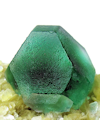
Joined: 05 May 2007
Posts: 1534
Location: Catalonia



|
 Posted: Jul 21, 2016 03:24 Post subject: Re: Cleaning Pyrite Posted: Jul 21, 2016 03:24 Post subject: Re: Cleaning Pyrite |
|
|
| Pierre Joubert wrote: | | Hi James, that is exactly what Ian said: ' If the cubes are on matrix, do not use water, just a soft brush.' I personally do not like the matrix as it is, as I understand it, only a clay. The matrix is also heavy and expensive to post. Does anyone know how these originally formed and how did they end up in the clay? |
There are some theories. It was in the Jurassic, about 150 million years ago. There was a large mass of mud formed by clay and gypsum, with some chlorite rich in iron. The temperature and the pressure were rather high, and it was somewhat deep under the surface. By some chemical reactions that I don't know the details, the sulfur from gypsum and the iron from the chlorite reacted to form iron disulfide, pyrite. The crystals grew from inside out making room for themselves in the mud. Eventually the mud dried and was brought to the surface by tectonic movements. The matrix is unstable when wet, so it is much better to prevent it from having contact with water.
|
|
| Back to top |
|
 |
James Catmur
Site Admin

Joined: 14 Sep 2006
Posts: 1470
Location: Cambridge



|
 Posted: Jul 21, 2016 03:37 Post subject: Re: Cleaning Pyrite Posted: Jul 21, 2016 03:37 Post subject: Re: Cleaning Pyrite |
|
|
| Pierre Joubert wrote: | | James wrote: | | Do not use water, as it causes the matrix to swell and split! |
Hi James, that is exactly what Ivan said: ' If the cubes are on matrix, do not use water, just a soft brush.'
I personally do not like the matrix as it is, as I understand it, only a clay. The matrix is also heavy and expensive to post. Does anyone know how these originally formed and how did they end up in the clay? |
Sorry Pierre, I was just explaining the reason why one should not use water - the effect is rather annoying if you have a specimen with multiple, separate cubes arranged nicely on the marl matrix. Like the one shown below (which has been no where near water)
| Mineral: | Pyrite |
| Locality: | | Valdeperillo, Cornago, Comarca Arnedo, La Rioja, Spain |  |
|
| Description: |
|
| Viewed: |
10694 Time(s) |
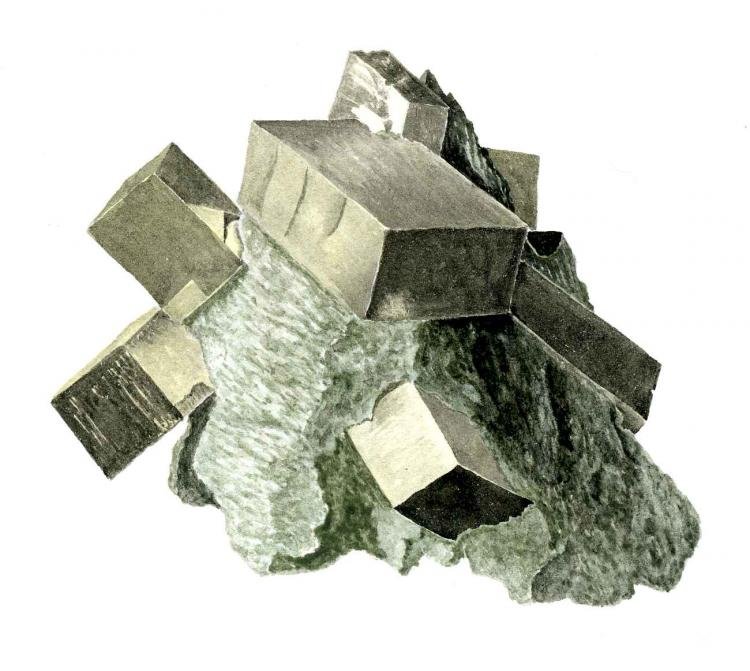
|
|
|
| Back to top |
|
 |
Pierre Joubert
Joined: 09 Mar 2012
Posts: 1605
Location: Western Cape



|
 Posted: Jul 21, 2016 04:18 Post subject: Re: Cleaning Pyrite Posted: Jul 21, 2016 04:18 Post subject: Re: Cleaning Pyrite |
|
|
| Carles Millan wrote: | | Pierre Joubert wrote: | | Hi James, that is exactly what Ian said: ' If the cubes are on matrix, do not use water, just a soft brush.' I personally do not like the matrix as it is, as I understand it, only a clay. The matrix is also heavy and expensive to post. Does anyone know how these originally formed and how did they end up in the clay? |
There are some theories. It was in the Jurassic, about 150 million years ago. There was a large mass of mud formed by clay and gypsum, with some chlorite rich in iron. The temperature and the pressure were rather high, and it was somewhat deep under the surface. By some chemical reactions that I don't know the details, the sulfur from gypsum and the iron from the chlorite reacted to form iron disulfide, pyrite. The crystals grew from inside out making room for themselves in the mud. Eventually the mud dried and was brought to the surface by tectonic movements. The matrix is unstable when wet, so it is much better to prevent it from having contact with water. |
Thank you Carles. The result is spectacular. So, the matrix is most probably where they formed and not just a 'vessel'.
_________________
Pierre Joubert
'The tree of silence bears the fruit of peace. ' |
|
| Back to top |
|
 |
Pierre Joubert
Joined: 09 Mar 2012
Posts: 1605
Location: Western Cape



|
 Posted: Jul 21, 2016 04:48 Post subject: Re: Cleaning Pyrite Posted: Jul 21, 2016 04:48 Post subject: Re: Cleaning Pyrite |
|
|
| James wrote: | | Pierre Joubert wrote: | | James wrote: | | Do not use water, as it causes the matrix to swell and split! |
Hi James, that is exactly what Ivan said: ' If the cubes are on matrix, do not use water, just a soft brush.'
I personally do not like the matrix as it is, as I understand it, only a clay. The matrix is also heavy and expensive to post. Does anyone know how these originally formed and how did they end up in the clay? |
Sorry Pierre, I was just explaining the reason why one should not use water - the effect is rather annoying if you have a specimen with multiple, separate cubes arranged nicely on the marl matrix. Like the one shown below (which has been no where near water) |
Hi James. Nice specimen. We swapped a few matrix pieces from Cesar and fully understand this dilemma. I am adding photos of 2 specimens, from Cesar, that has natural oxidation (I do not understand the process).
| Mineral: | Pyrite |
| Locality: | | Ampliación a Victoria Mine, De Alcarama Range, Navajún, Comarca Cervera, La Rioja, Spain |  |
|
| Dimensions: | 47 x 45 x 37 mm |
| Description: |
|
| Viewed: |
10503 Time(s) |
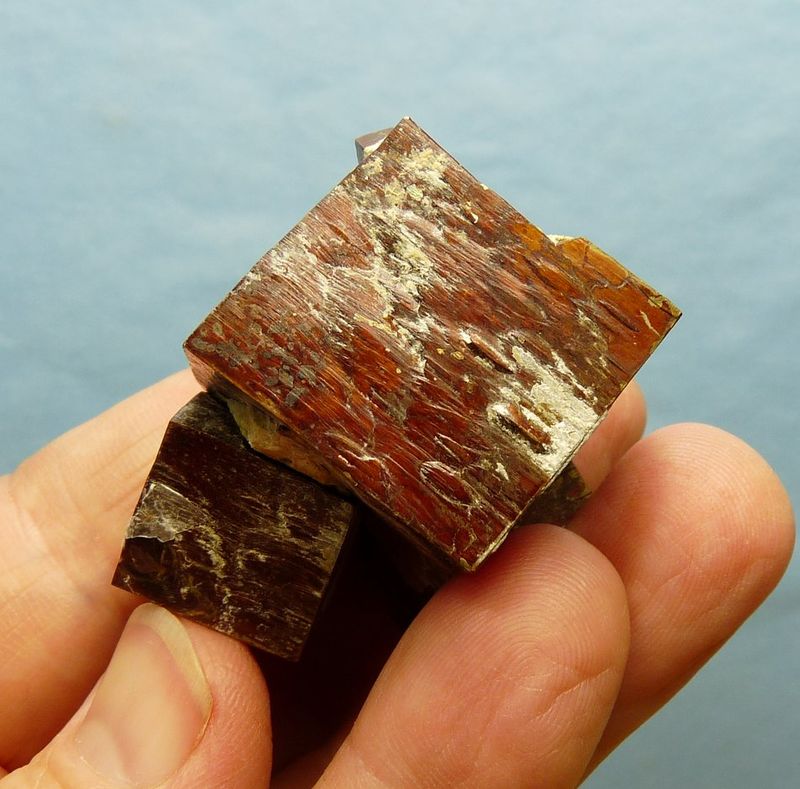
|
| Mineral: | Pyrite |
| Locality: | | Ampliación a Victoria Mine, De Alcarama Range, Navajún, Comarca Cervera, La Rioja, Spain |  |
|
| Dimensions: | 41 x 33 x 25 mm |
| Description: |
|
| Viewed: |
10517 Time(s) |
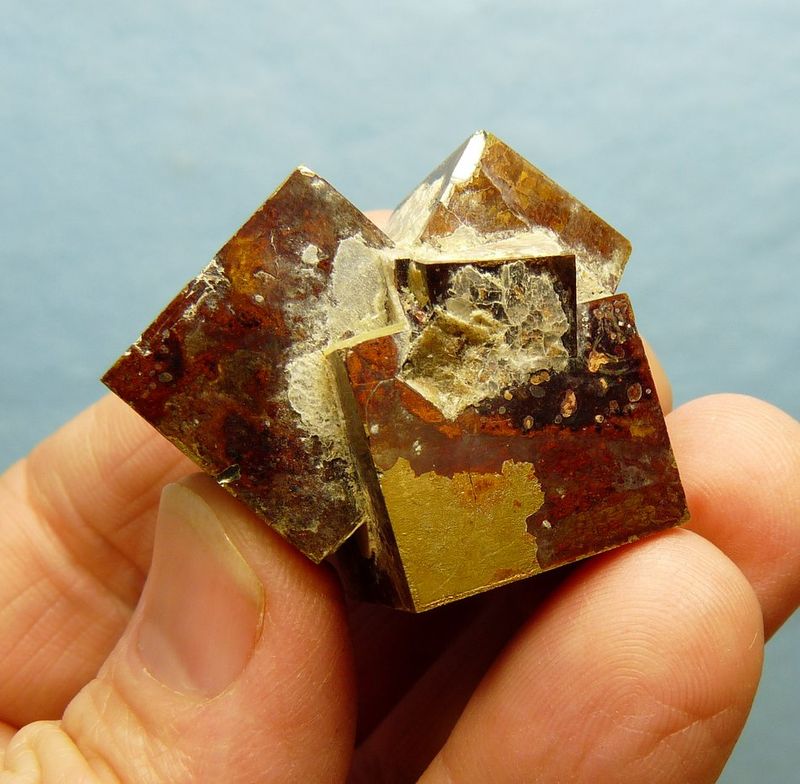
|
_________________
Pierre Joubert
'The tree of silence bears the fruit of peace. ' |
|
| Back to top |
|
 |
Carles Millan
Site Admin

Joined: 05 May 2007
Posts: 1534
Location: Catalonia



|
 Posted: Jul 21, 2016 05:07 Post subject: Re: Cleaning Pyrite Posted: Jul 21, 2016 05:07 Post subject: Re: Cleaning Pyrite |
|
|
Another example, here with the matrix of marlstone
| Mineral: | Pyrite |
| Locality: | | Ampliación a Victoria Mine, De Alcarama Range, Navajún, Comarca Cervera, La Rioja, Spain |  |
|
| Dimensions: | 95 mm x 78 mm. Main crystal: 52 mm wide, 31 mm on edge. Weight: 512 g |
| Description: |
|
| Viewed: |
10614 Time(s) |
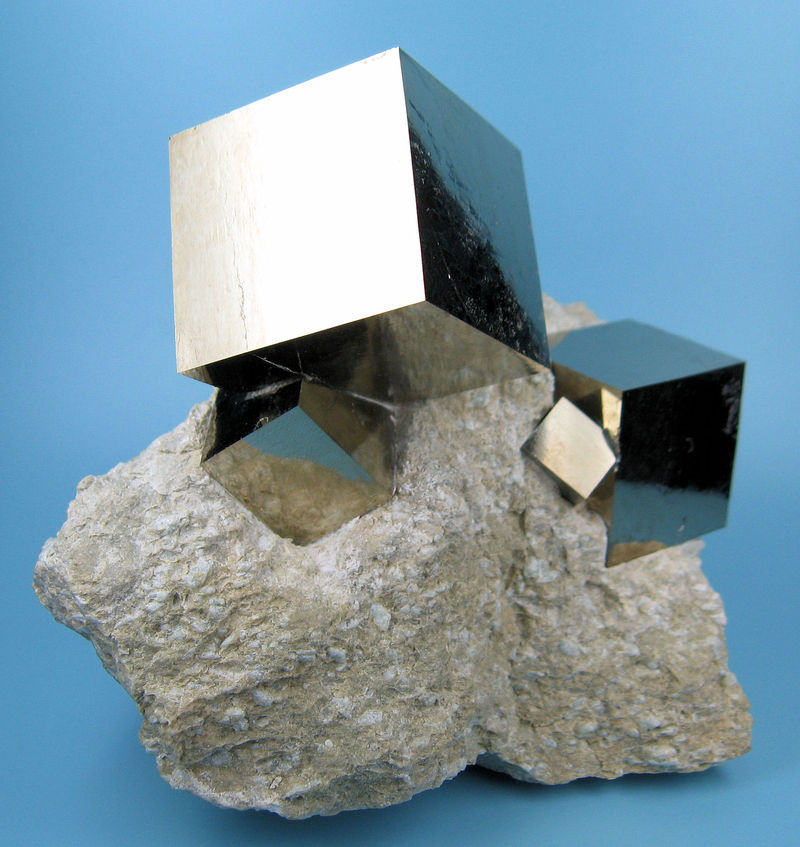
|
|
|
| Back to top |
|
 |
|





